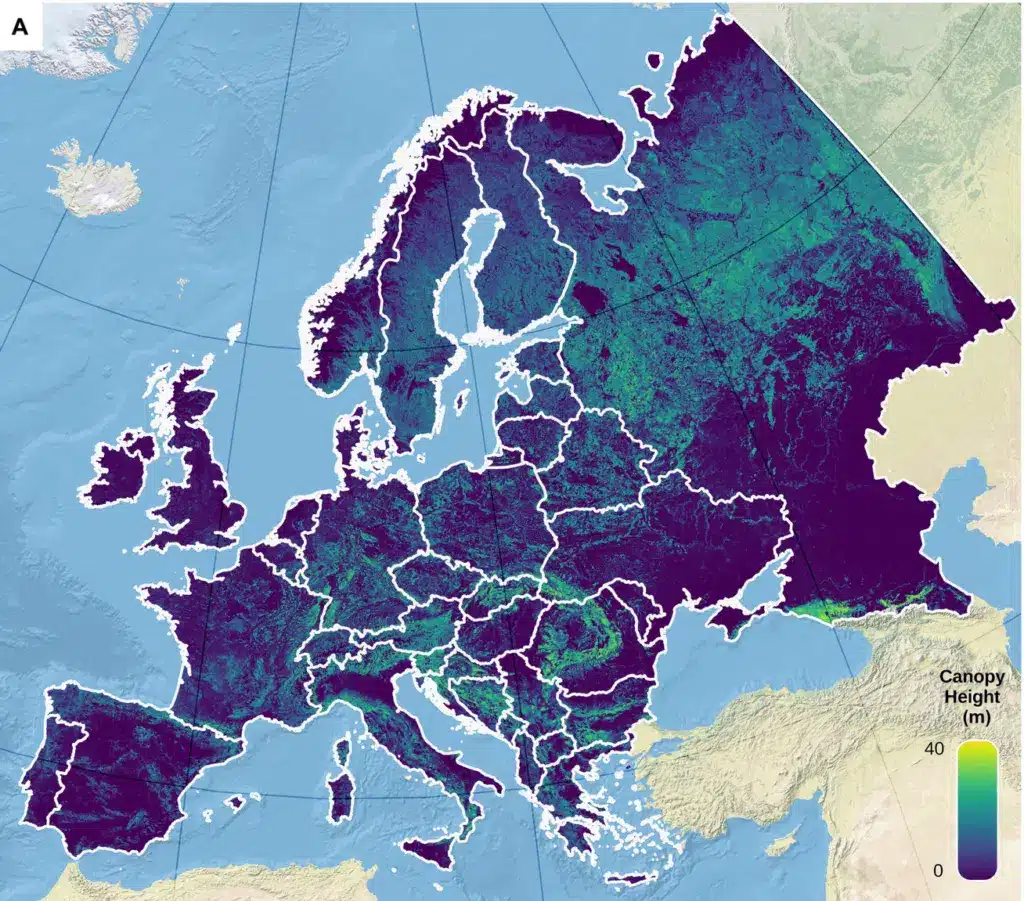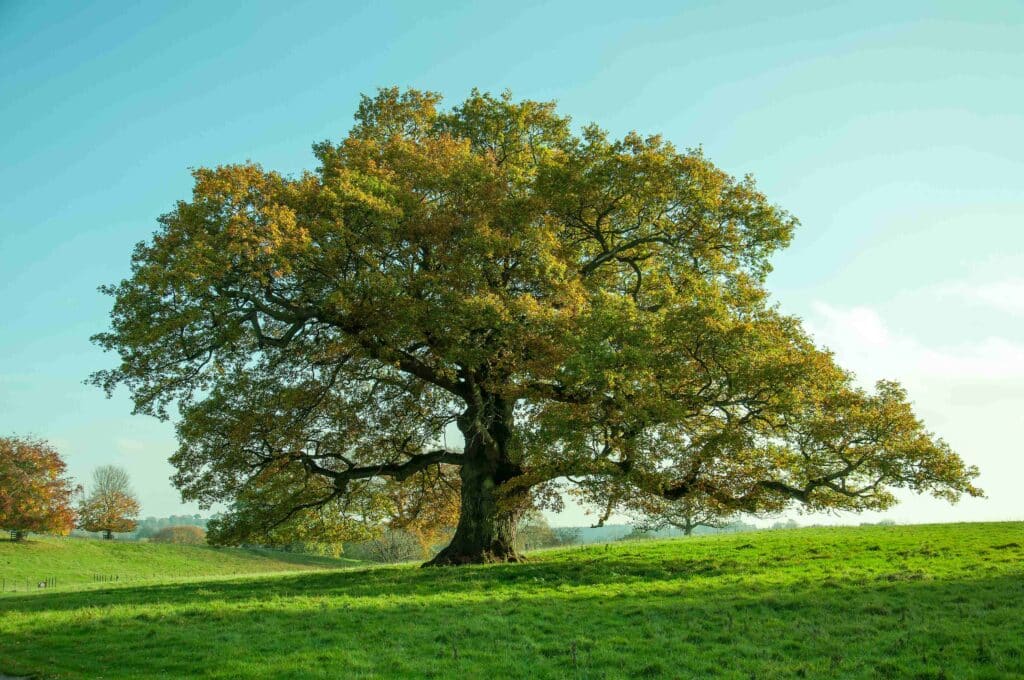English Oak trees could become the cornerstone of reforestation projects and timber plantations across Europe, with a study warning that the trees are one of the only species to survive climate change.
Published in Nature Ecology & Evolution, A climate-induced tree species bottleneck for forest management in Europe tackles the changes to European forests expected to occur over the next 100 years – adding to a squeeze on timber, expected to grow fourfold over the next 30 years, and compromising the EU’s push to build more with wood.
Led by Johannes Wessely and Stefan Dullinger from the University of Vienna, scientists tested 69 of the most common European tree species to see how they would react to warmer temperatures. It found that depending on the region, one-third and half of all tree species found today will no longer be able to cope with climate change.
“This is an enormous decline,” according to lead author Johannes Wessely, “especially when you consider that only some species are of interest for forestry.”
According to Dr Wessely, while Europe is home to a mix of native tree species, its population is comparatively lower than that of North America and East Asia. Climate change is exacerbating “a bottleneck” in the supply of tree species for timber production.

Scientists found that just nine of 69 species are fit to withstand the future climate in Europe, compared to four in the UK. “Trees planted now for reforestation must survive under current and future conditions,” Dr Wessely said, “This is difficult because they have to withstand the cold and frost of the next few years and a much warmer climate at the end of the 21st century. There is only a very small overlap.”
However, even when future-proof trees are selected, major problems remain—the selection of nine species is not enough to make a species-rich mixed forest.
“Mixed forests consisting of many tree species are important to make forests more robust against disturbances such as bark beetles,” according to study co-author Rupert Seidl, from the Technical University of Munich in Germany. However, “in some European places, we could run out of tree species to establish such colourful mixed forests.”
According to Dr Wessely, English oak, scientifically known as Quercus robur, is one of the only species to thrive in current and future environments. “English oak is of high importance for timber production, carbon storage, and biodiversity…making it suitable for reforestation projects.”

However, while English oak will thrive, European beech (Fagus sylvatica) will struggle. Dr Wessely said sites where European beeches grow today—in Northern and Eastern Europe—will be unsuitable, while regions that could support it later this century are climatically unsuitable today.
Ultimately, this means that European forests would be made up of only a tiny pool of timber species, lacking the diversity and resilience of mixed forests: “We should be very cautious about what we plant today, as it will shape our future forests and their future,” Dr Wesseley said, adding that European governments may need to replant forested areas with fresh species with new species later this century to help woodlands thrive.
“Our work clearly shows how severely climate change affects forest vitality. We cannot rely solely on a new mix of tree species; rapid measures to mitigate climate change are essential for the sustainable protection of our forests,” Dr Wessely said.
The latest study comes after the EU introduced a new database, the Database of European Forest Insect and Disease Disturbances (the DEFIDZ), the first unified European registry developed by the European Commission’s Joint Research Centre (JRC).
The database contains more than 650,000 harmonised georeferenced records, mapping insects and diseases that occurred in European forests between 1963 and 2021, using data acquired through land surveys and remote sensing techniques.
According to the EU, Europe’s forests are under threat, “induced by global warming, seem to contribute to forests’ increased vulnerability to the incidence of pathogens and diseases.”
- To learn more about the projected increase in timber demand and its impact on global forests, visit Wood Central’s special feature.






